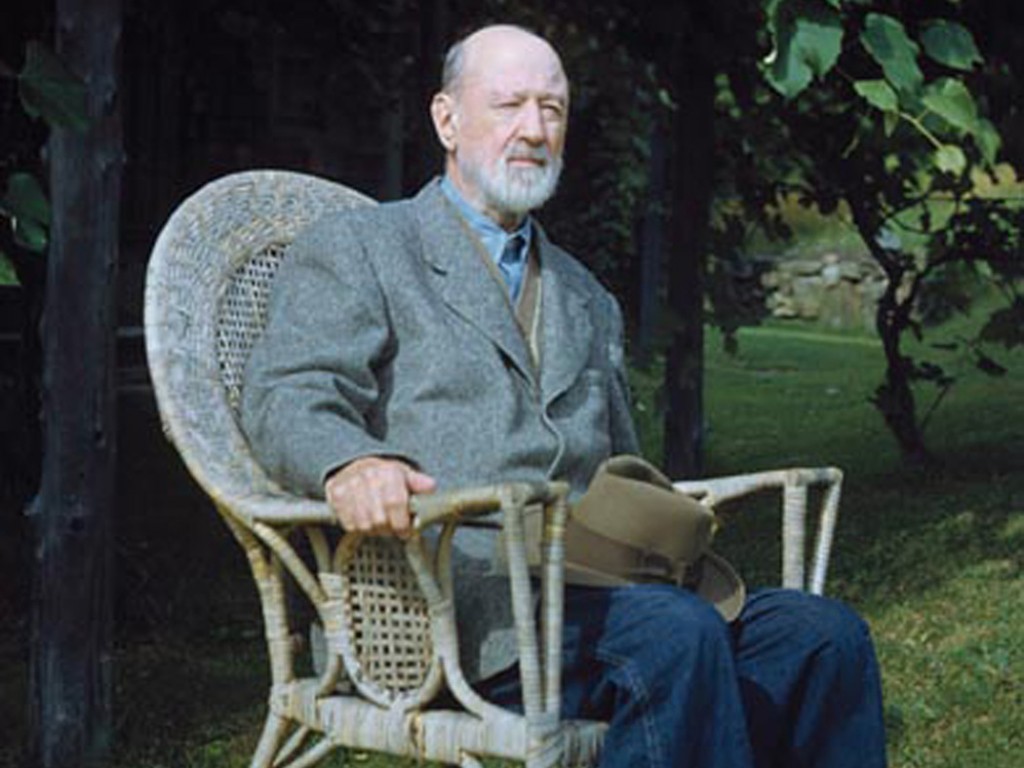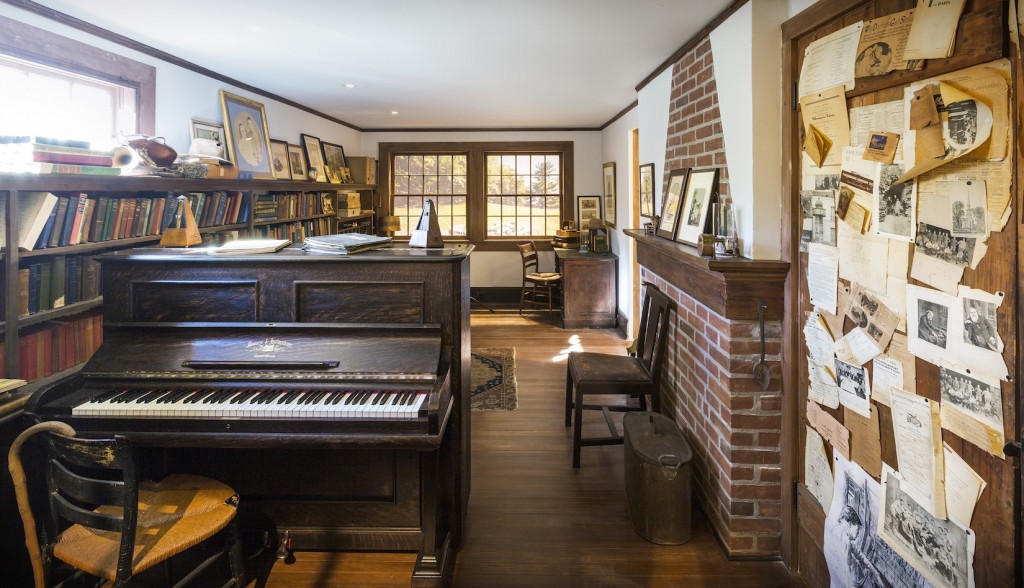With his studio transplanted, Charles Ives’ music lives again at the American Academy of Arts and Letters
Sunday afternoon, the American Academy of Arts and Letters presented a concert in tribute to Charles Ives that also served as a grand announcement of their recent acquisition: Ives’s complete studio from his home in West Redding, Connecticut.
The entire room has been transported and reassembled in the galleries, with The Unanswered Question on the music stand and pencil shavings on his desk. For a composer whose entire career was tied to memories of the past, the studio is itself an inchoate sketch of the music.
As Vivian Perlis wrote in her insightful program note, “It can be said that Ives’s journeys to the past resemble nothing less than the re-living of times through sonic memories—inconstant, fragmented, difficult, aggressive, joyful and nostalgic.”
The compact, intelligent selection of chamber music, played in the Academy’s concert hall, had a rough sense of this journey for Ives, who spent his last decades constantly revising his earlier works.
Ives began as a capable but unremarkable follower of Brahms, then found his way through a complex mix of intellectual conviction and personal sentiment to his historical place as the most important American classical, and the first modern experimental and avant-garde, composer.
The Violin Sonata No. 2 is a bridge between those two worlds. The music begins in dark-toned introversion, then whipsaws into fragments of hymns and popular songs. There is a constant push and pull between two ideas of the past, the classical tradition and Ives’ personal, sentimental education, ending with “The Revival,” one of his more expressive passages. The sonata was the most nostalgic piece on the program and was played with a robust sound, elegant musicality and great sensitivity by violinist Wendy Sharp and pianist Melvin Chen.
Like Mahler, Ives’ bedrock as a composer are his songs. There was a small but highly representative selection, sung with confidence, feeling and humor by baritone Michael Todd Simpson with pianist Djordje Nesic. The two halves of “Memories”—Very Pleasant and Rather Sad encapsulate a jaunty tune—with whistling—anticipating the curtain at the opera house, and pure sentiment, with a light touch. “Slugging a Vampire” is a Bronx cheer in the direction of William Randolph Hearst; “At the River,” his arrangement of the hymn tune; and “General William Booth Enters Into Heaven,” his agglomeration of tribute to the founder of the Salvation Army with muscular harmonies and rhythms.
Ives wrote two string quartets, and JACK Quartet played the Second. One of Ives’ major pieces, it sounds like the doorway to a vast range of 20th-century music. Again, there are the bits of hymns and popular tunes, especially “Dixie’s Land” and “Columbia, the Gem of the Ocean,” but they sound like quips and decorations: this music is less about memory than imagination. The three movements take as literal subject “Discussion,” “Argument,” then reconciliation in the mystical world of “The Call of the Mountains.”
The interplay of voices, the way they move in and out of independent polyphony and homophony and use freely dissonant and atonal counterpoint, sounds like Schoenberg avant le lettre (the first version of the piece was finished in 1904, a year before Schoenberg completed his own first quartet) and is a foundation for Elliott Carter’s five string quartets.
JACK brought the highest level of technical refinement and expressive understanding to the music. In any other concert, this memorable performance would have been the high point of the concert—-except for the surpassing greatness of Gilbert Kalish playing the “Concord” Piano Sonata.
“Concord” is Ives’ masterpiece, and there is no musician who knows it as well as Kalish. He made an excellent recording of the work for the Nonesuch label back in 1976, and has been playing it regularly since. The music is technically demanding, full of chords too big for anyone’s hands, incredibly complex polyphony, and, at forty-five minutes, physically arduous. The deepest challenge is the intellectual one, divining the key expressive ideas and the most salient lines in music that can seem impossibly dense.
This was some of the finest pianism heard in New York in many years. Kalish played with astonishing strength and intellectual clarity.
There are two key phrases in the piece that Kalish consistently brought to the fore; a quotation of the opening four notes from Beethoven’s Symphony No. 5, and a countermelody that rises and falls gracefully in important moments throughout the piece. These two motifs are like great whales, churning under the surface of the music, leaping above the waves into the sunlight at important, dramatic moments, showing the way forward.
Kalish also kept up a steady, clear pulse and deeply musical dynamic shape. Long stretches of the piece have no bar lines, and Ives’ indication for dynamics can be cursory, especially in the second, “Hawthorne,” movement. Notation like that makes it too tempting for a musician to indulge in ad lib playing, superfluous in such expressionistic music. Kalish revealed (in the words of Kyle Gann), Ives’s “preternatural ability to imprint his imagination onto the musical page intact in every detail … without the slightest curtailing of the emotional intent for the sake of a merely aesthetic effect.”
The result was emotionally wrenching, transcendent music making. When Carol Wincenc, playing the flute line that accompanies the final, “Thoreau,” movement, entered from her perch in the balcony, the effect was unforgettable.
The Ives Studio will be open to visitors from May 22 through June 15. artsandletters.org.


Posted Apr 14, 2014 at 2:46 pm by Jack M. Firestone
A pianist friend of mine, Greg Goostray, went to visit the owners who acquired the Ives property. A letter he wrote about his experience is included in the article at the link below.
http://springrake.wordpress.com/2013/10/16/ives-on-umpawaug-road-an-update/